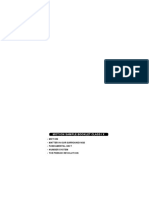0% found this document useful (0 votes)
112 views3 pagesClass9 Motion Notes
The document covers the concepts of motion in Class 9 Science, defining rest and motion, and detailing types of motion such as circular, linear, and oscillatory. It explains key physical quantities like distance and displacement, their differences, and introduces uniform and non-uniform motion along with their characteristics. Additionally, it discusses speed, velocity, acceleration, and uniform circular motion with relevant formulas.
Uploaded by
gauravmaurya0449Copyright
© © All Rights Reserved
We take content rights seriously. If you suspect this is your content, claim it here.
Available Formats
Download as PDF, TXT or read online on Scribd
0% found this document useful (0 votes)
112 views3 pagesClass9 Motion Notes
The document covers the concepts of motion in Class 9 Science, defining rest and motion, and detailing types of motion such as circular, linear, and oscillatory. It explains key physical quantities like distance and displacement, their differences, and introduces uniform and non-uniform motion along with their characteristics. Additionally, it discusses speed, velocity, acceleration, and uniform circular motion with relevant formulas.
Uploaded by
gauravmaurya0449Copyright
© © All Rights Reserved
We take content rights seriously. If you suspect this is your content, claim it here.
Available Formats
Download as PDF, TXT or read online on Scribd
/ 3
























































